
Key Points
- More Signs of “Defensive” Rotation – Food & Staples Retailing
- Momentum Shifting for Major U.S. Markets
- Global Stocks on the Verge of a Relative Breakout
- Four Markets Showing Near-Term Strength
- Sentiment is Tilting Toward Fear
Chart in Focus
In our note yesterday, we pointed out that we are closely watching the relative strength in the defensive sectors of the U.S. market. Taking that thinking to the industry level, we can see that the S&P 500 Food & Staples Retailing Index traded to a new high yesterday. The index is holding above the breakout level and the rising 50-day moving average.
On a relative basis, the index appears to be “making the turn” vs. the S&P 500. The ratio has regained the 50-day moving average, which is turning higher, and has broken the downtrend line from the March 2020 high.
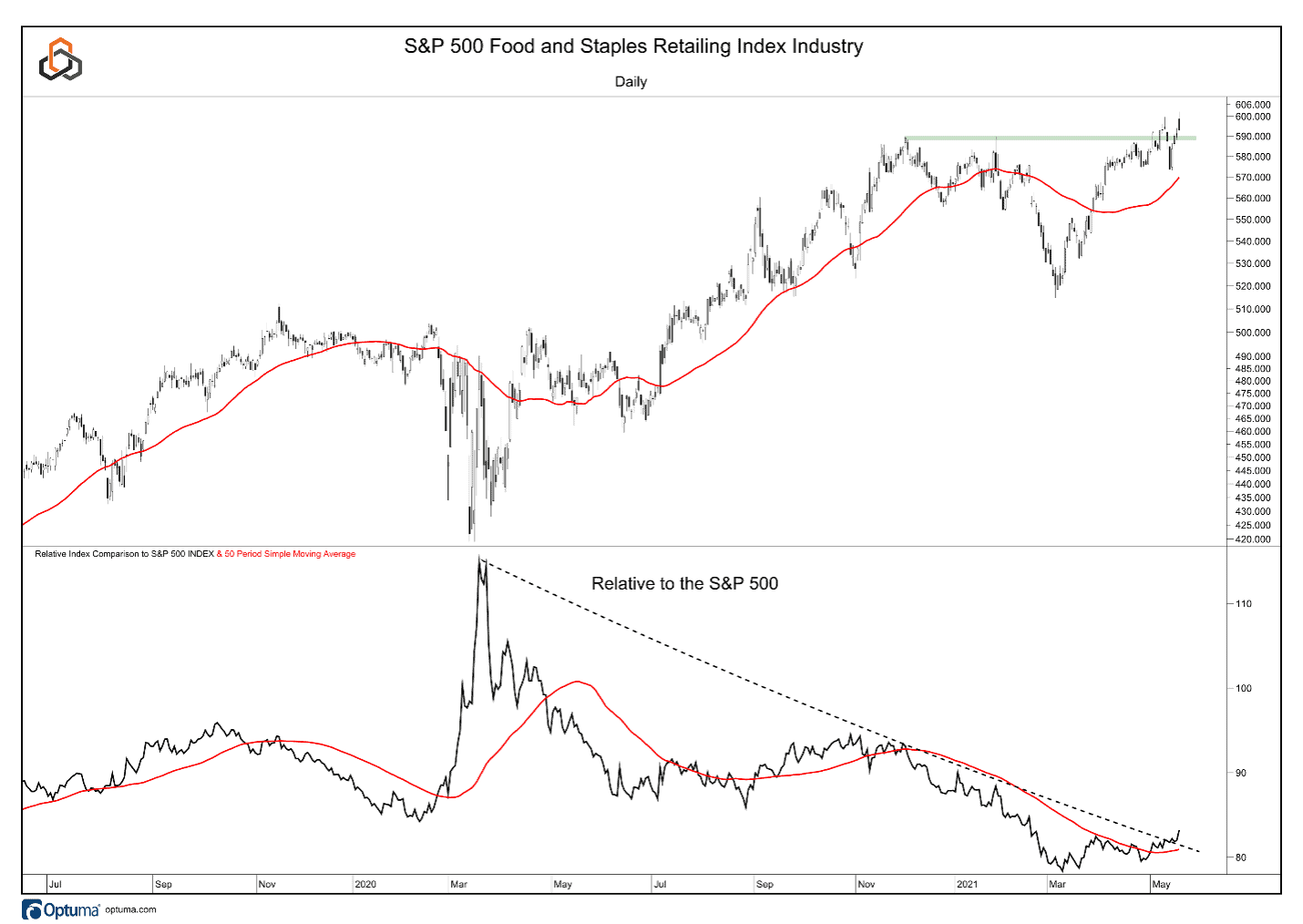
Mid-Week Market Update – United States
Like last week, the S&P 500 has started this week under pressure. From a trend perspective, the index remains above the rising 50-day moving average which acted as support to the pullback early last week. Should the 50-day be broken, the 200-day moving average will likely come into play. Momentum continues to wane with the RSI making lower highs and failing to confirm the recent price highs.
Near-term support is in the 4,000 – 4,100 range. Below that, there is scope for a move down to 3,700.
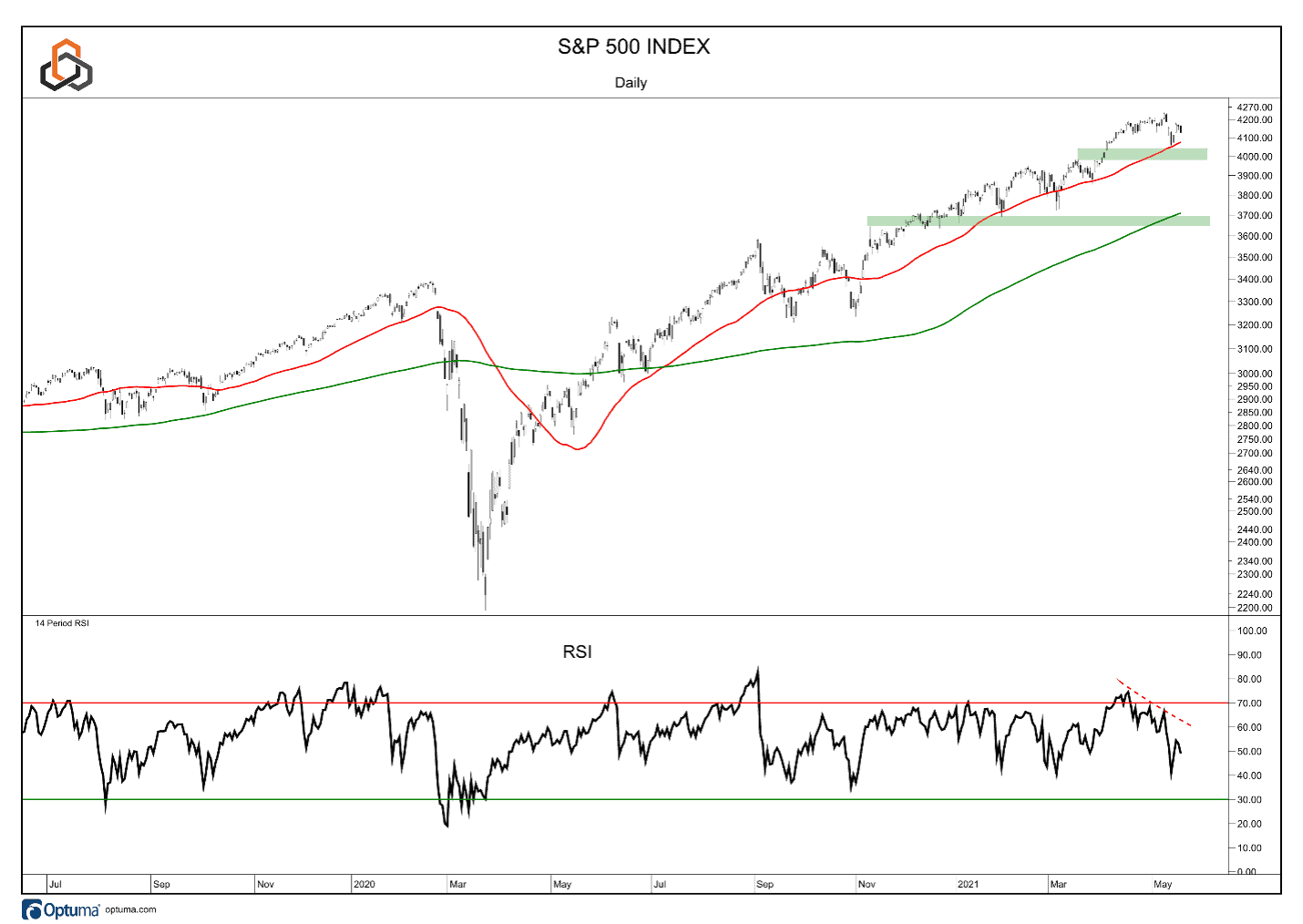
The S&P Small Cap 600 Index continues to dance with the 50-day moving average which is shifting from rising to flat. The index has been in a consolidation since making a high in early March. Support is in the 1,250 – 1,300 range. Should that level give way, the 200-day moving average, currently near 1,130, would be the next logical level to be tested. Here too, we can see the shift in momentum as the RSI has made a series of lower highs and is now in the middle of the range.
Thus far, Small Caps are holding support relative to the S&P 500.
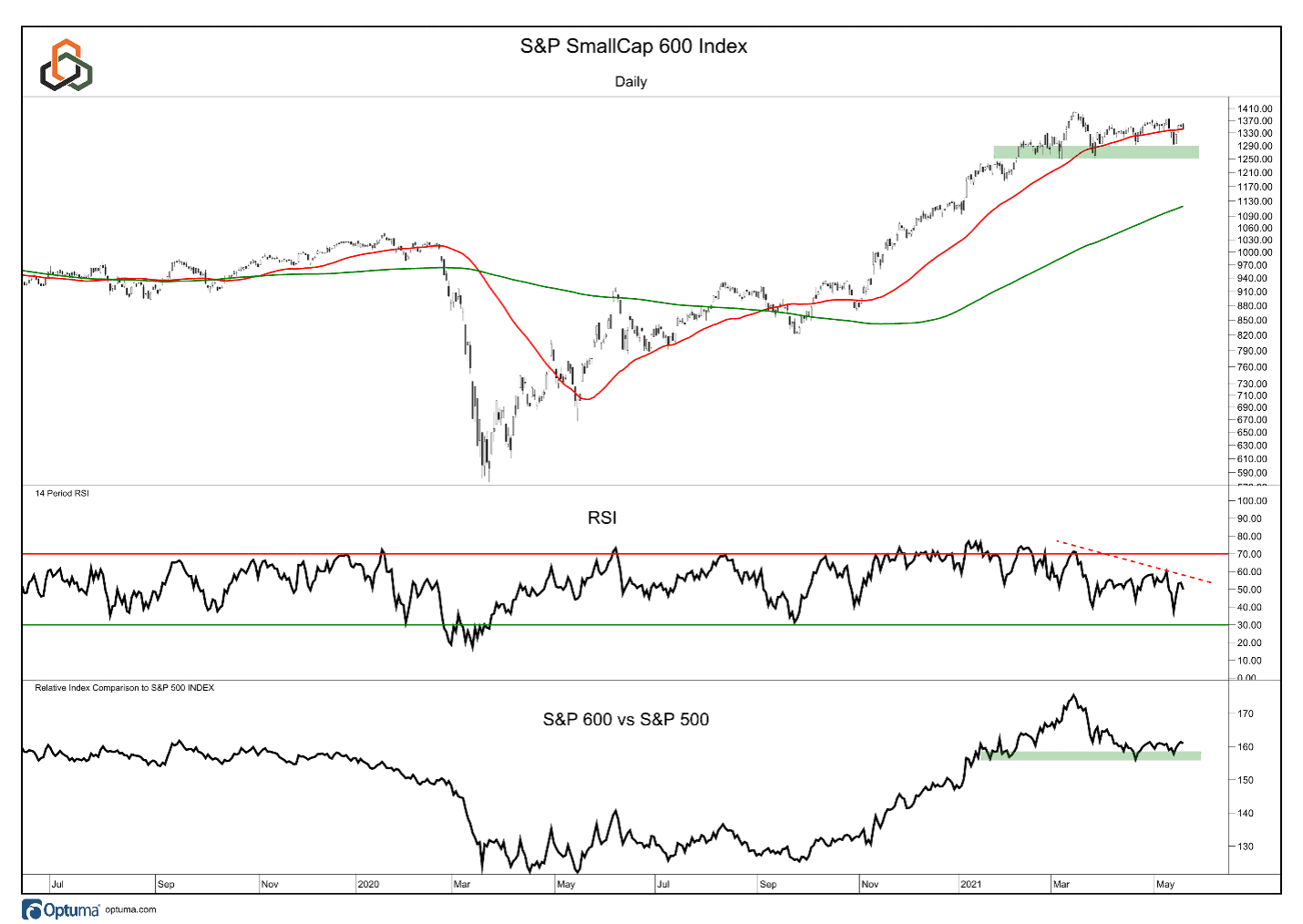
The NASDAQ Composite Index remains below the flat 50-day moving average and in a consolidation on an absolute basis. The key level to watch is around the March 5th low, which lines up with the 200-day moving average. Should that level be broken, the NASDAQ’s topping process would be complete. Note that the RSI is shifting lower.
As we pointed out last week, support has already been broken relative to the S&P 500 and the ratio continues to make lower highs and lower lows. Until this series is broken, it is hard to make a compelling case for this former market leader.
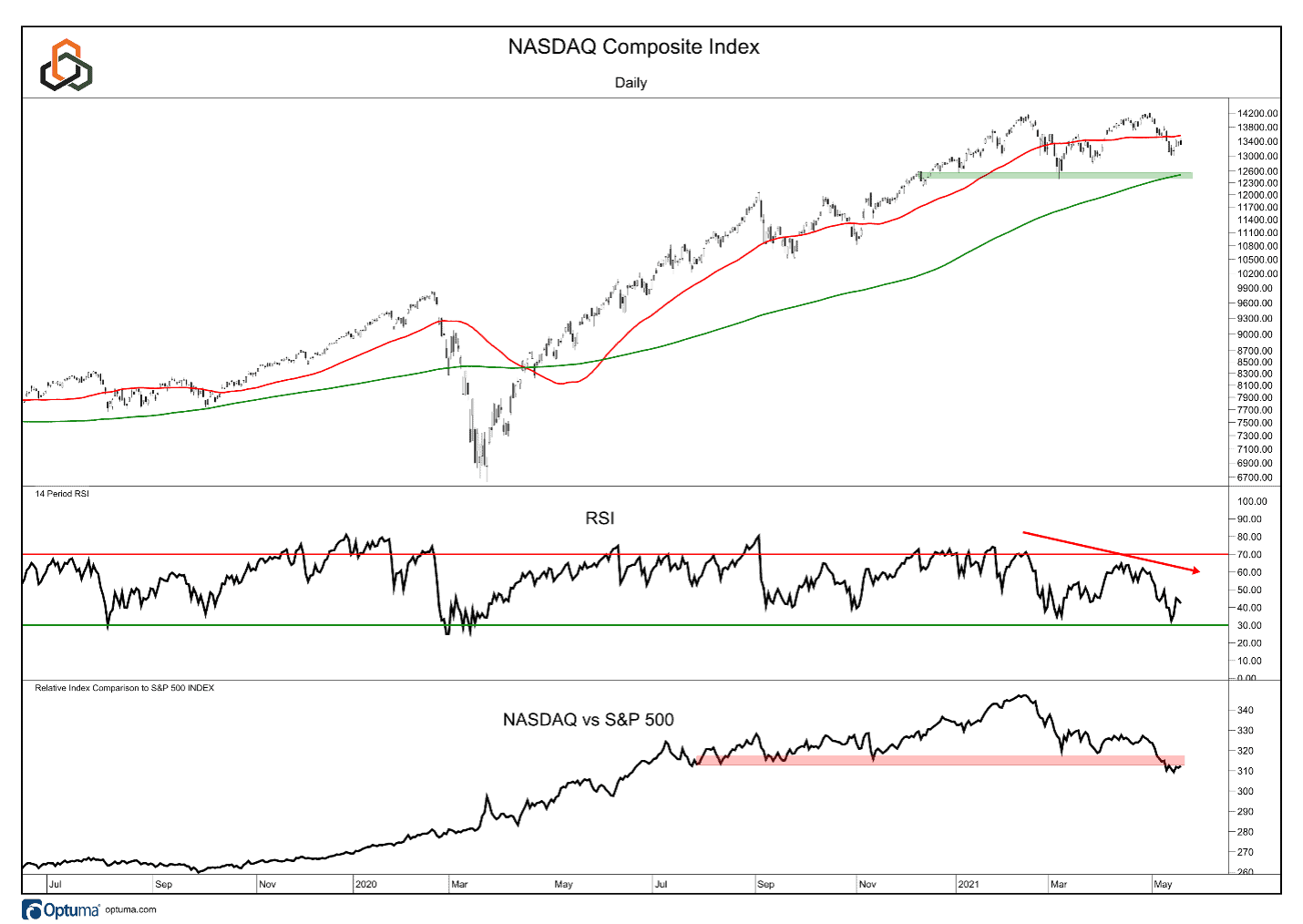
Global Markets
The Global Dow Index is in an uptrend, like the S&P 500, trading above the rising 50 and 200-day moving averages. Unlike the major U.S. averages, the RSI is not making a series of lower highs, as it remains near overbought levels. Recent lows for this indicator have been near the 50 level, keeping momentum in a bullish regime.
Perhaps more interesting is the fact that the Global Dow is on the verge of a breakout relative to the S&P 500. Is the tide shifting in favor of stocks outside the U.S.?
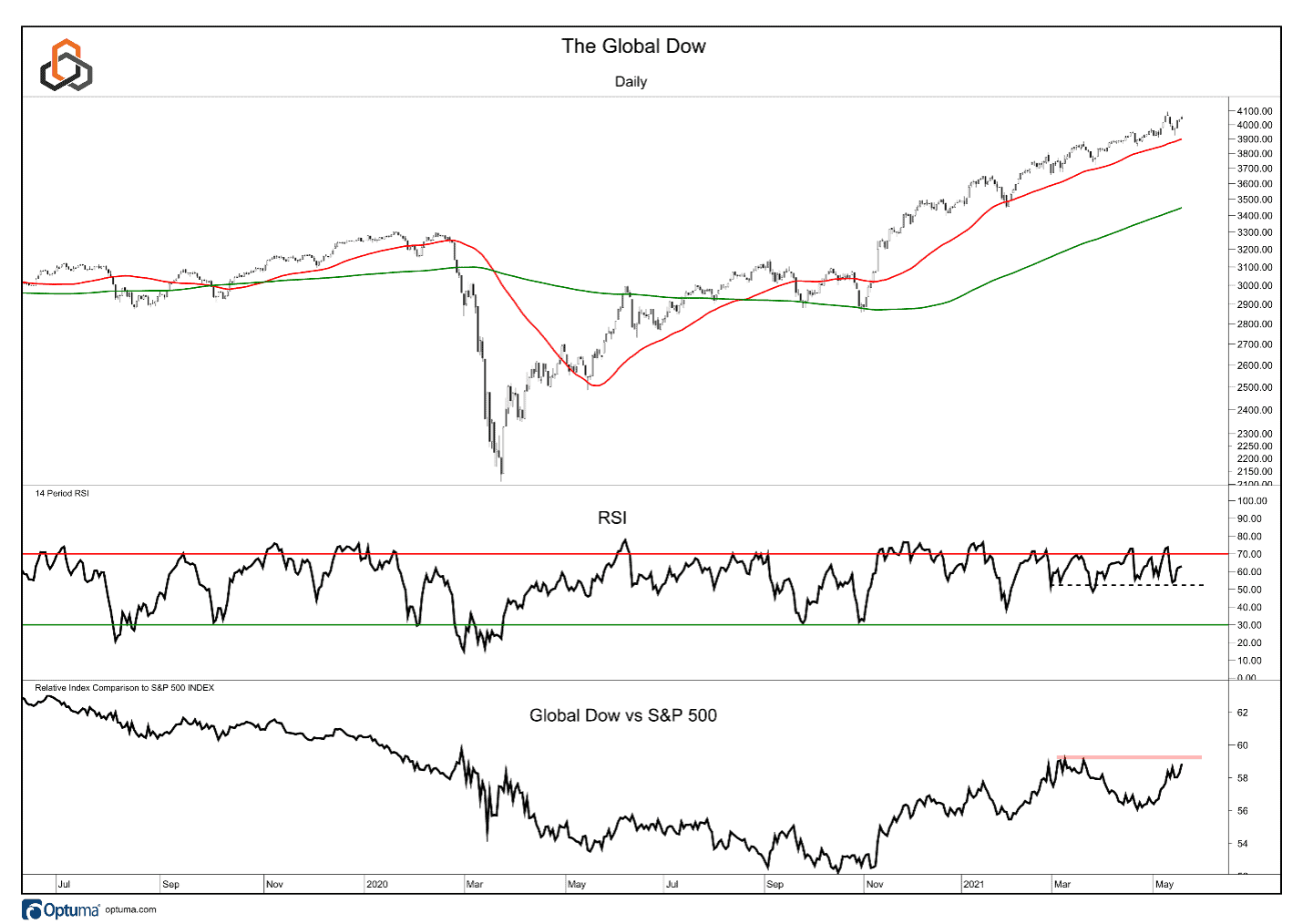
Four markets outside the U.S. that are exhibiting near-term strength are Austria, Spain, Poland, and Mexico.
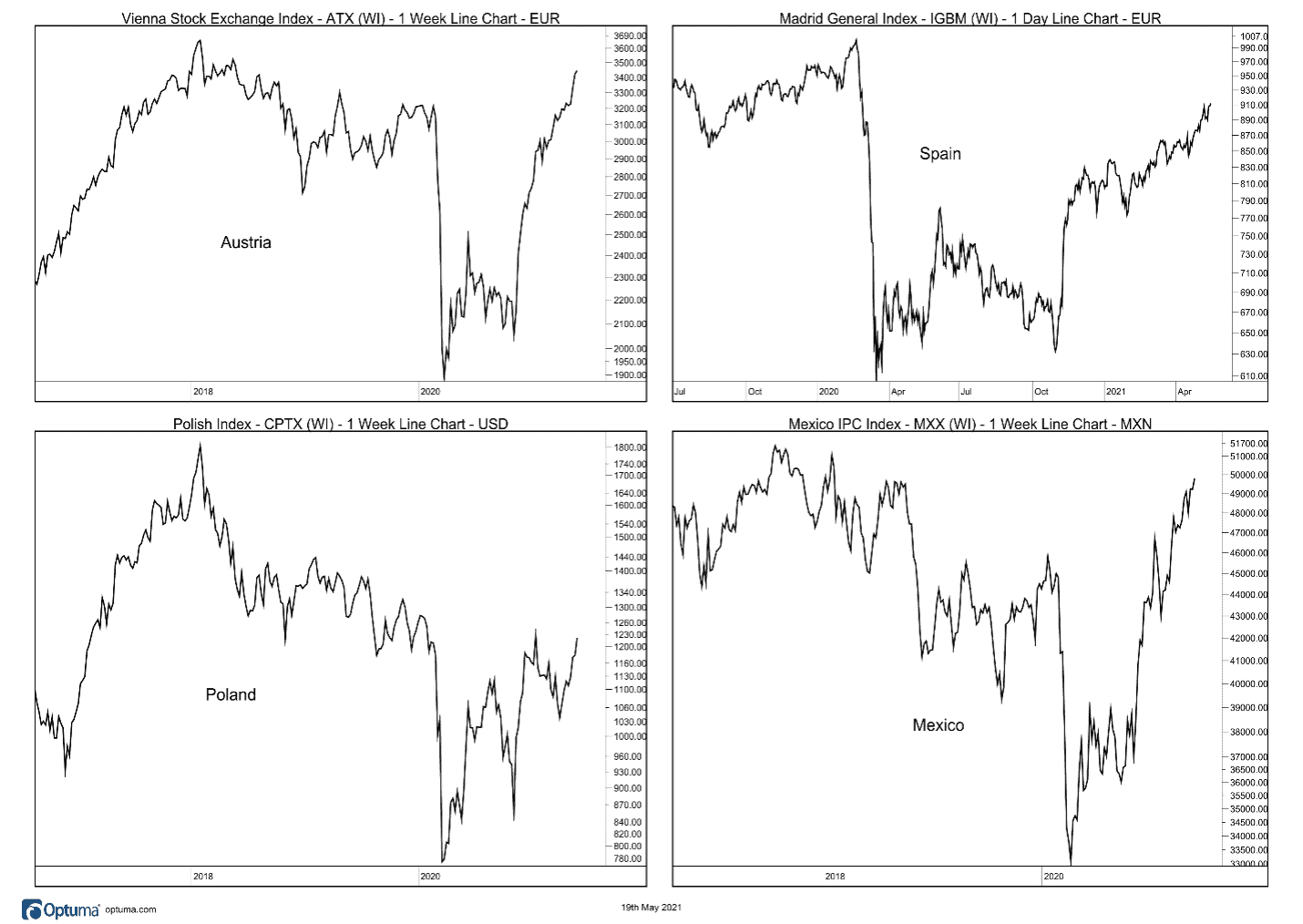
Sentiment Check
The move below the 20 level for the VIX is proving to be short-lived as the market’s “fear gauge” regained that mark last week and is holding above it this week. The bullish take-away is that the series of lower highs remains in place. However, an inability to remain below 20 points to possible tension under the surface of the market.
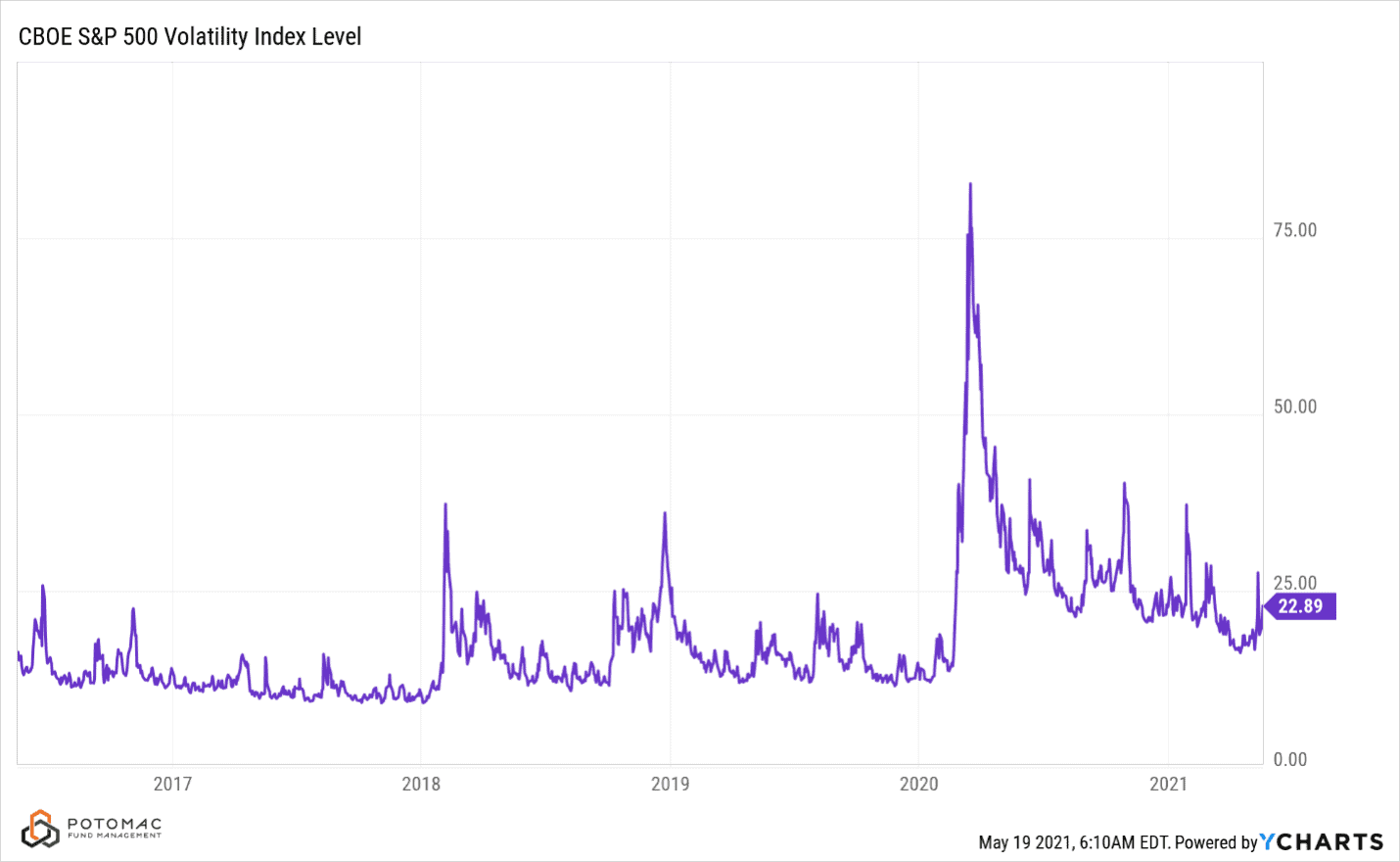
The CNN Fear & Greed Index has moved to a reading of 38 from 49 last week, shifting into a “fear” position. Generally, readings below 20 will catch the attention of contrarians.
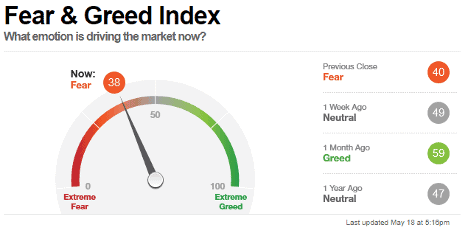
Take-Aways
On Monday we wrote that a less aggressive stance may be the prudent course of action, and that remains the case today. The biggest concern that we see is the waning upside momentum on the part of the main U.S. markets. However, momentum appears to be holding up for markets outside the U.S. Sentiment has moved toward greed but is not yet at levels that offer a contrarian bullish signal.
